News
Interview: Ari Aster Talks the Making of ‘Hereditary’

Hereditary represents the feature directing debut for Ari Aster, who previously directed six short films. Ever since Hereditary premiered at the Sundance Film Festival in January 2018, critics have compared Hereditary to iconic films like Rosemary’s Baby and The Shining and labeled Aster an auteur.
The following interview with Aster was conducted, via email, in the first week of April. Hereditary opens in theaters on June 8.
DG: What was the genesis of, the inspiration for, Hereditary, and what is the significance of the film’s title?
AA: I wanted to make a serious meditation on grief and trauma that gradually curdles into a nightmare – the way that life can feel like a nightmare when disaster strikes. The true significance of the title shouldn’t dawn on the viewer until the end of the film, but suffice it to say that Hereditary is concerned primarily with the insidiousness of family ties. Over the course of the film, it becomes increasingly clear that this family has no free will; their fate has been passed down to them, and it’s an inheritance that they have no hope of shaking.
DG: What were the themes that you wanted to explore with this film?
AA: There are lots of movies about tragedy bringing people together and strengthening bonds. I wanted to make a film about all the ways that grief can tear people apart and how trauma can totally transform a person – and not necessarily for the better! Hereditary is a buffet of worst-case scenarios leading to an ugly, hopeless end. Now I just need to investigate why I wanted to do all that.
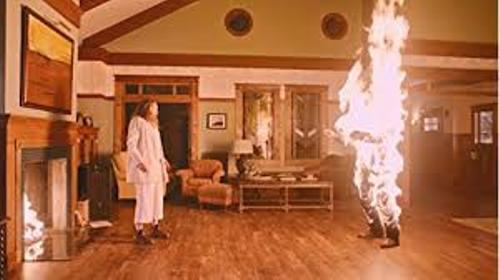
DG: What was the stylistic, visual strategy that you and your cinematographer discussed prior to the start of filming, and how would you describe the look and tone of the film?
AA: Well, I’ve been working with my DP, Pawel Pogorzelski, since I met him at AFI, and we’ve developed an amazing shorthand. We speak the same language, to such an extent that we become quite upset with each other at the very hint of a disagreement or misunderstanding. The way I work – and I’m sure that there are better ways of working – is that I always begin by composing a shot list, and I don’t talk to anyone in the crew until that shot list is complete. From there, questions of execution, lighting, production design, etc, become central. But first, every head of department needs to be able to see the film in their head. In this case, the camera would be very fluid, detached, observational – encroaching. The tone is tough to speak to…but I can say that I would often tell the crew that the film should feel evil. We’re with the family, and we’re joined to them in our ignorance of what’s really happening, but there should also be the sense that we’re watching them from a more knowing, sadistic perspective.
DG: What are the genre influences that you brought to this film, and what do you think audiences will find most compelling and frightening about this film?
AA: It was important to me that we attend to the family drama before we attended to the horror elements. The film needed to stand on its own as a domestic tragedy before it could work as a scary movie. So, most of the references that I gave to the crew were not horror films. Mike Leigh was one – especially Secrets and Lies and All or Nothing. We also talked seriously about The Ice Storm and In the Bedroom, which has a reversal at the 30-minute mark that isn’t so different from the one in Hereditary. Bergman is one of my heroes, and Cries and Whispers was something I was thinking about, along with Autumn Sonata for the way that it dealt with the mother-daughter relationship. The horror films we discussed were mostly from the 60s and 70s. Rosemary’s Baby was an obvious touchstone. Don’t Look Now is a big one. Nicholas Roeg, in general, was big for me. I love Jack Clayton’s The Innocents. And then there are the great Japanese horror films – Ugetsu, Onibaba, Empire of Passion, Kwaidan, Kuroneko…
DG: How would you describe the family dynamic that exists within the Graham family when we first meet them in the film, and how would you describe the journey they take throughout the film?
AA: The Grahams are already isolated from each other when we meet them. The air needed to be thick with a fraught, unacknowledged history. From there, things occur that only serve to alienate them further, and by the end of the film, each member of the family becomes a total stranger – if not a seeming double of themselves – to the other. To reference Freud’s essay on the uncanny, the home in Hereditary becomes resolutely unhomelike.
DG: How would you describe the nature of the malevolent presence that plagues the Graham family in the film, and how do they respond to this?
AA: There are many toxic influences at play. Guilt, resentment, blame, distrust…and then there’s a demon, too.
DG: How would you describe the nature of the relationship that exists, both in life and death, between Charlie and her grandmother, Ellen?
AA: To explain this would be to betray some pretty big reveals in the film. I’ll refrain to avoid spoiling!
DG: What was the biggest challenge that you faced during the filming?
AA: We built the entire interior of the house on a sound stage. Everything inside the house was designed and built from scratch. Beyond this, we had the additional challenge of needing to create a miniature replica of the house (among many other miniatures). This meant that we needed to design every element of the home well in advance of shooting. That doesn’t just mean that we needed to decide on the layout of the house and the dimensions of the rooms, which is actually the easiest thing for the miniaturist to replicate; it meant that we needed to make committed decisions regarding the set dressing very early on. So, we needed to know what the furniture would be, what the wallpaper would be, what plants we’d have in each room, what drapes we’d be putting over the window, and so on and so forth. We shot everything involving the dollhouses in our last week of production, and it was so tight that we had miniatures being shipped in on the very days that they were being shot.
DG: What did Utah, your filming location, bring to this film that was unique from other filming locations that you might have chosen, and how would you described the backdrop, the setting, of the film?
AA: Well, we originally went to Utah because we were able to get more out of our budget over there. Also, the original plan was to make a winter movie and have the house be snowbound. That said, scheduling demanded that we shoot in the summer, and I ultimately couldn’t have been happier with the landscapes that Utah provided. I now can’t imagine the film looking any other way. I also need to say that we had the most incredible crew on this film – from the art department to the camera department, there wasn’t a single weak link. I’d recommend Utah to anyone looking to make a film.
DG: What’s your favorite scene or sequence in the film?
AA: Well, in the hope of avoiding a spoiler and at the risk of being excessively cryptic: there’s a prolonged montage of Toni Collette weeping uncontrollably (over the course of a week), and I’m quite pleased with how it turned out.
DG: When I read about Ann Dowd’s character, Joan, I immediately thought of Billie Whitelaw as Mrs. Baylock in The Omen. How would you describe Joan’s role in the film?
AA: Her character is definitely in that tradition. For that matter, she’s also in the tradition of characters like the Castevets in Rosemary’s Baby or Hilary Mason’s blind clairvoyant in Don’t Look Now. She stems from a pessimistic skepticism of the altruistic neighbor who seemingly has your best interests at heart. Conveniently, she also comes from a tradition in family dramas of benevolent outsiders stepping in to provide an outlet for an otherwise isolated member of a dysfunctional unit. Judd Hirsch in Ordinary People is one example.
DG: Given the overwhelmingly positive reaction the film has received so far, which is strange for a film that hasn’t even been formally released yet, it feels like the film has already attained the status of classic before most of the world has had a chance to see it. What have you experienced, in terms of audience reaction, during the screenings you’ve attended so far, and how would you describe the reaction you’ve gotten to the film so far?
AA: The reactions have been very exciting. To be honest, I was initially just very relieved that people didn’t think it was a giant piece of shit. But you learn quickly that it’s a uniquely quantifiable thing, whether your scary movie is working or not. It’s like making a comedy. Either people are laughing or they’re not. But I can say that there’s no feeling like having an audience collectively scream at something you’ve made. It’s a great dopamine high.
DG: As this is your first feature film, how would you describe the journey that you’ve taken over the past decade?
AA: I’ve been writing screenplays since I was twelve years old. I went to film school at the College of Santa Fe before studying Directing at the American Film Institute. After graduating AFI, I made dozens of short films, and by the time I got around to writing Hereditary, I had ten other feature scripts ready to go (two of which were on a track to getting made before Hereditary). It’s been a long road, but I couldn’t have been blessed with greater resources or stronger collaborators than those on Hereditary. I count myself extremely lucky.
DG: For someone who has hasn’t seen any of your previous work, your short films, what would you say is your hallmark, your signature, as a director, and what identifies Hereditary as being an Ari Aster film?
AA: I remember a great teacher of mine at AFI, Peter Markham, saying that filmmaking is (or should be) mischief-making. I agree wholeheartedly with that sentiment. Hereditary and all of my short films (and almost all of the films that I intend to make from here) are hopeful contributions to that tradition of mischief-making.
DG: Why do you think Hereditary stands apart from the legion of other genre films in the marketplace?
AA: I don’t feel it’s my place to speak to that. I will say that if the film works, I believe it’s because I made it my mission to always honor the characters before anything else. Also, there’s the very generous amount of full-frontal nudity that I made sure to include.
DG: When you look back on the entire experience of making Hereditary, is there one memory that stands out as being most telling about this entire experience for you, when you look back on the journey you’ve taken with the film?
AA: I can’t think of one memory in particular. I can say that there were several moments during production in which I suddenly remembered that I was actually making a movie. That has always been my dream. So I’d try to remember to feel my feet on the ground and appreciate that. Those were the best moments.
'Civil War' Review: Is It Worth Watching?
Follow our new YouTube channel "Mysteries and Movies" here.

News
Netflix Releases First BTS ‘Fear Street: Prom Queen’ Footage

It’s been three long years since Netflix unleashed the bloody, but enjoyable Fear Street on its platform. Released in a tryptic fashion, the streamer broke up the story into three episodes, each taking place in a different decade which by the finale were all tied together.
Now, the streamer is in production for its sequel Fear Street: Prom Queen which brings the story into the 80s. Netflix gives a synopsis of what to expect from Prom Queen on their blog site Tudum:
“Welcome back to Shadyside. In this next installment of the blood-soaked Fear Street franchise, prom season at Shadyside High is underway and the school’s wolfpack of It Girls is busy with its usual sweet and vicious campaigns for the crown. But when a gutsy outsider is unexpectedly nominated to the court, and the other girls start mysteriously disappearing, the class of ’88 is suddenly in for one hell of a prom night.”
Based on R.L. Stine’s massive series of Fear Street novels and spin-offs, this chapter is number 15 in the series and was published in 1992.
FEAR STREET: PROM QUEEN IS NOW IN PRODUCTION 🩸 Welcome to Shadyside High. We're gonna have a killer time. pic.twitter.com/jDl0zRa2CH
— Netflix (@netflix) April 30, 2024
Fear Street: Prom Queen features a killer ensemble cast, including India Fowler (The Nevers, Insomnia), Suzanna Son (Red Rocket, The Idol), Fina Strazza (Paper Girls, Above the Shadows), David Iacono (The Summer I Turned Pretty, Cinnamon), Ella Rubin (The Idea of You), Chris Klein (Sweet Magnolias, American Pie), Lili Taylor (Outer Range, Manhunt) and Katherine Waterston (The End We Start From, Perry Mason).

No word on when Netflix will drop the series into its catalog.
'Civil War' Review: Is It Worth Watching?
Follow our new YouTube channel "Mysteries and Movies" here.
News
Live Action Scooby-Doo Reboot Series In Works at Netflix

The ghosthunting Great Dane with an anxiety problem, Scooby-Doo, is getting a reboot and Netflix is picking up the tab. Variety is reporting that the iconic show is becoming an hour-long series for the streamer although no details have been confirmed. In fact, Netflix execs declined to comment.

If the project is a go, this would be the first live-action movie based on the Hanna-Barbera cartoon since 2018’s Daphne & Velma. Before that, there were two theatrical live-action movies, Scooby-Doo (2002) and Scooby-Doo 2: Monsters Unleashed (2004), then two sequels that premiered on The Cartoon Network.
Currently, the adult-oriented Velma is streaming on Max.
Scooby-Doo originated in 1969 under the creative team Hanna-Barbera. The cartoon follows a group of teenagers who investigate supernatural happenings. Known as Mystery Inc., the crew consists of Fred Jones, Daphne Blake, Velma Dinkley, and Shaggy Rogers, and his best friend, a talking dog named Scooby-Doo.

Normally the episodes revealed the hauntings they encountered were hoaxes developed by land-owners or other nefarious characters hoping to scare people away from their properties. The original TV series named Scooby-Doo, Where Are You! ran from 1969 to 1986. It was so successful that movie stars and pop culture icons would make guest appearances as themselves in the series.
Celebrities such as Sonny & Cher, KISS, Don Knotts, and The Harlem Globetrotters made cameos as did Vincent Price who portrayed Vincent Van Ghoul in a few episodes.
'Civil War' Review: Is It Worth Watching?
Follow our new YouTube channel "Mysteries and Movies" here.
News
BET Releasing New Original Thriller: The Deadly Getaway
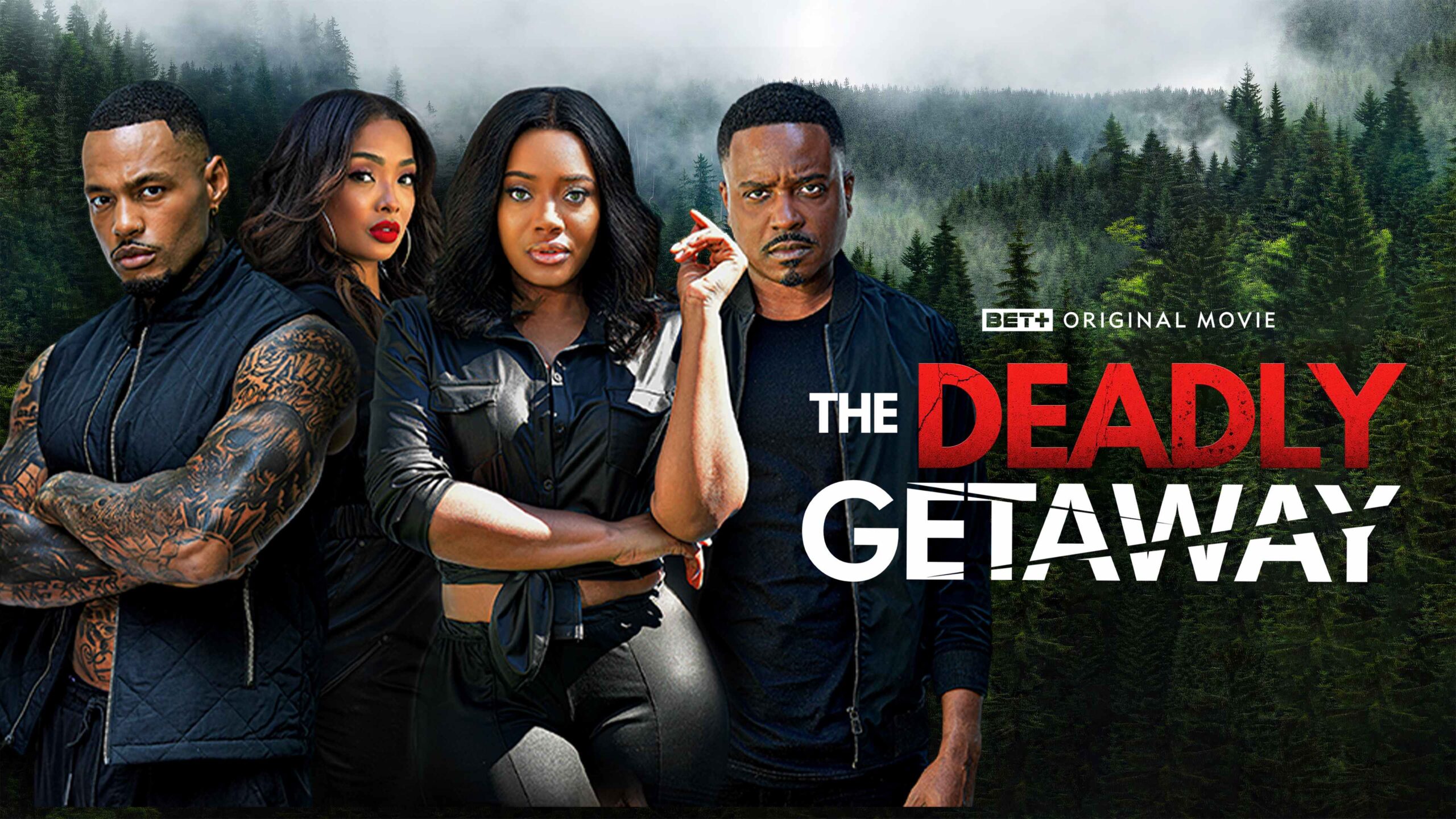
BET will soon be offering horror fans a rare treat. The studio has announced the official release date for their new original thriller, The Deadly Getaway. Directed by Charles Long (The Trophy Wife), this thriller sets up a heart racing game of cat and mouse for audiences to sink their teeth into.
Wanting to break up the monotony of their routine, Hope and Jacob set off to spend their vacation at a simple cabin in the woods. However, things go sideways when Hope’s ex-boyfriend shows up with a new girl at the same campsite. Things soon spiral out of control. Hope and Jacob must now work together to escape the woods with their lives.
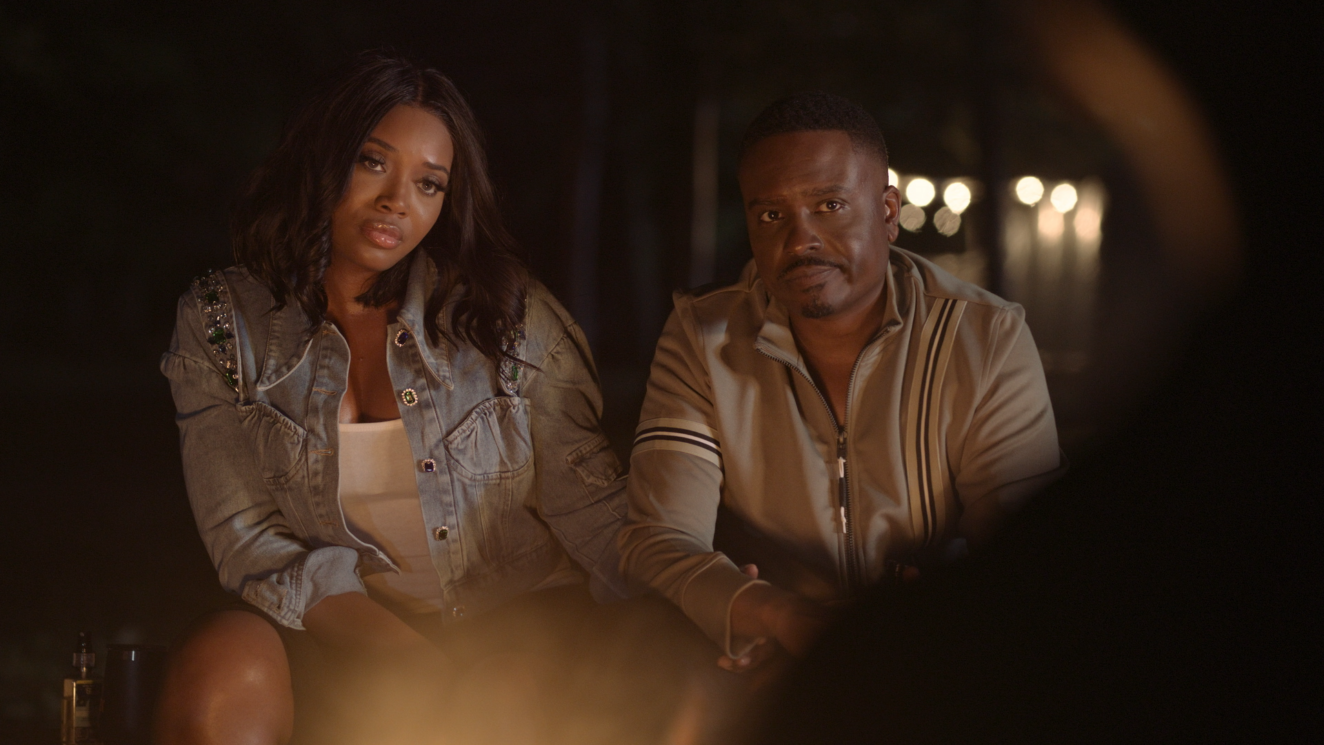
The Deadly Getaway is written by Eric Dickens (Makeup X Breakup) and Chad Quinn (Reflections of US). The Film stars, Yandy Smith-Harris (Two Days in Harlem), Jason Weaver (The Jacksons: An American Dream), and Jeff Logan (My Valentine Wedding).
Showrunner Tressa Azarel Smallwood had the following to say about the project. “The Deadly Getaway is the perfect reintroduction to classic thrillers, which encompass dramatic twists, and spine-chilling moments. It showcases the range and diversity of emerging Black writers across genres of film and television.”
The Deadly Getaway will premiere on 5.9.2024, exclusively ion BET+.
'Civil War' Review: Is It Worth Watching?
Follow our new YouTube channel "Mysteries and Movies" here.
-
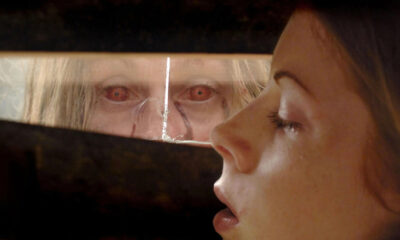
 Movies5 days ago
Movies5 days ago’28 Years Later’ Trilogy Taking Shape With Serious Star Power
-

 Movies6 days ago
Movies6 days ago‘Longlegs’ Creepy “Part 2” Teaser Appears on Instagram
-
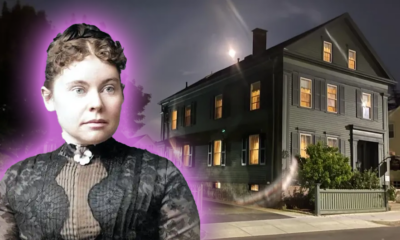
 News5 days ago
News5 days agoWin a Stay at The Lizzie Borden House From Spirit Halloween
-
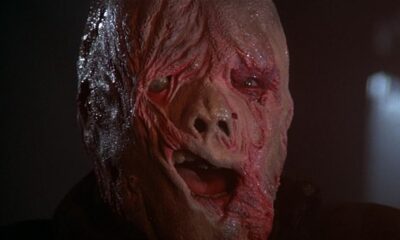
 News6 days ago
News6 days agoWatch ‘The Burning’ At The Location Where It Was Filmed
-
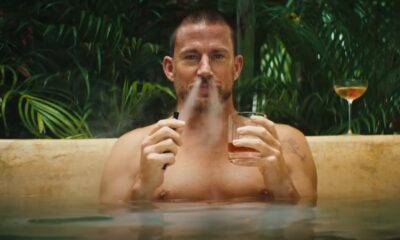
 News6 days ago
News6 days ago‘Blink Twice’ Trailer Presents a Thrilling Mystery in Paradise
-
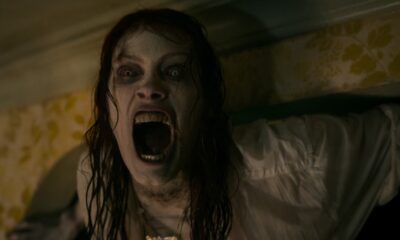
 Movies4 days ago
Movies4 days ago‘Evil Dead’ Film Franchise Getting TWO New Installments
-
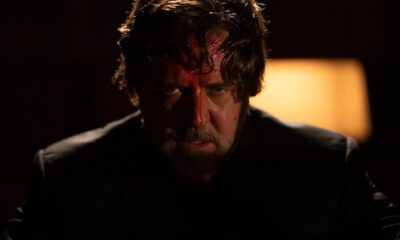
 Movies5 days ago
Movies5 days agoTrailer for ‘The Exorcism’ Has Russell Crowe Possessed
-
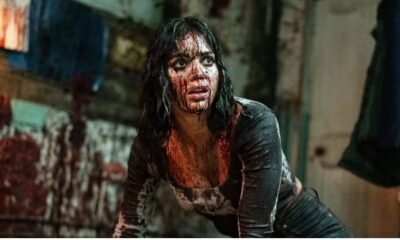
 Movies6 days ago
Movies6 days agoMelissa Barrera Says ‘Scary Movie VI’ Would Be “Fun To Do”
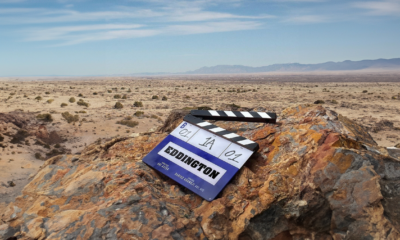

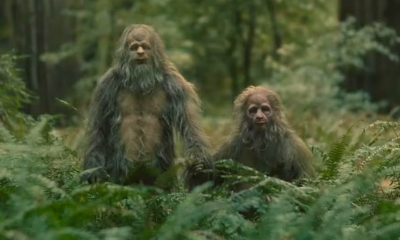






















You must be logged in to post a comment Login